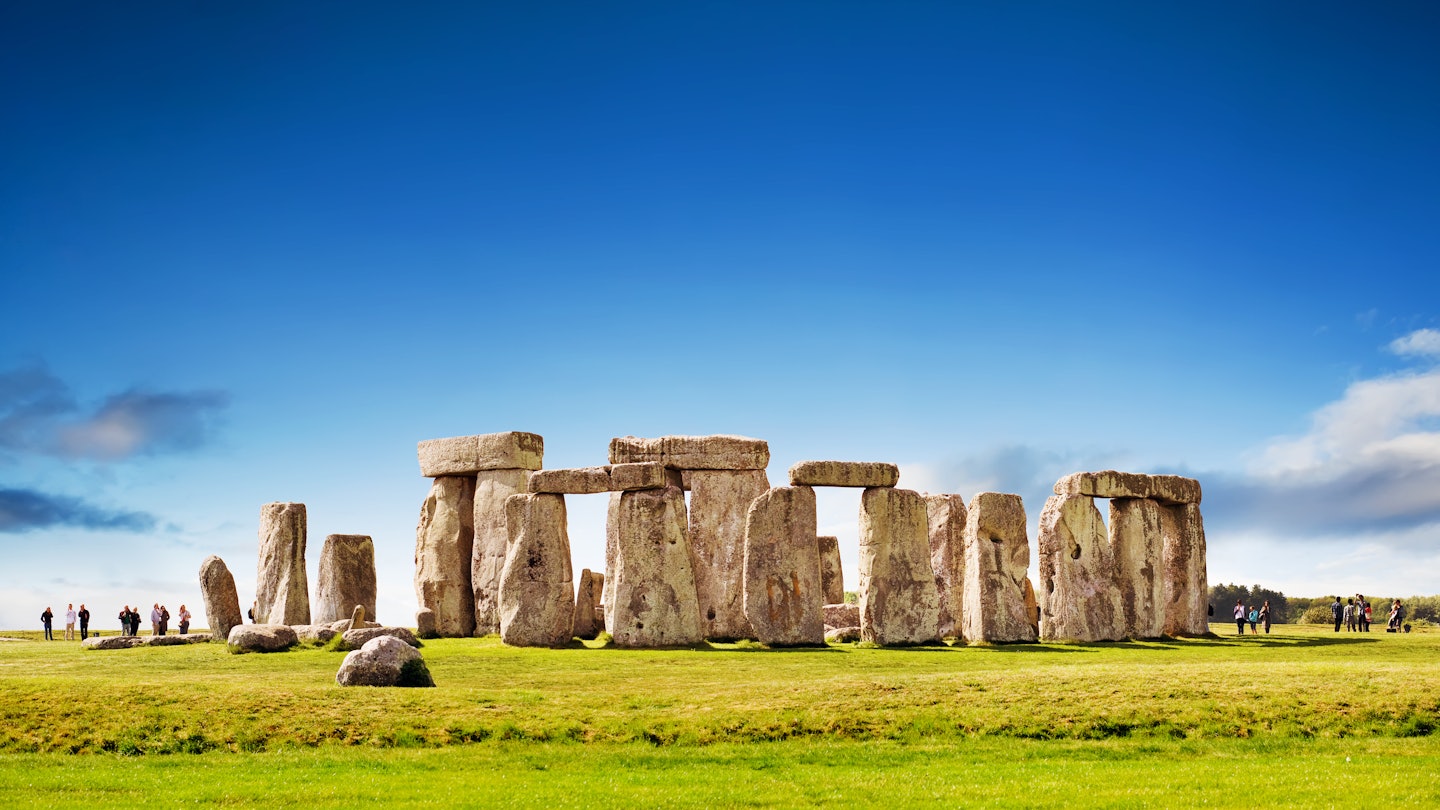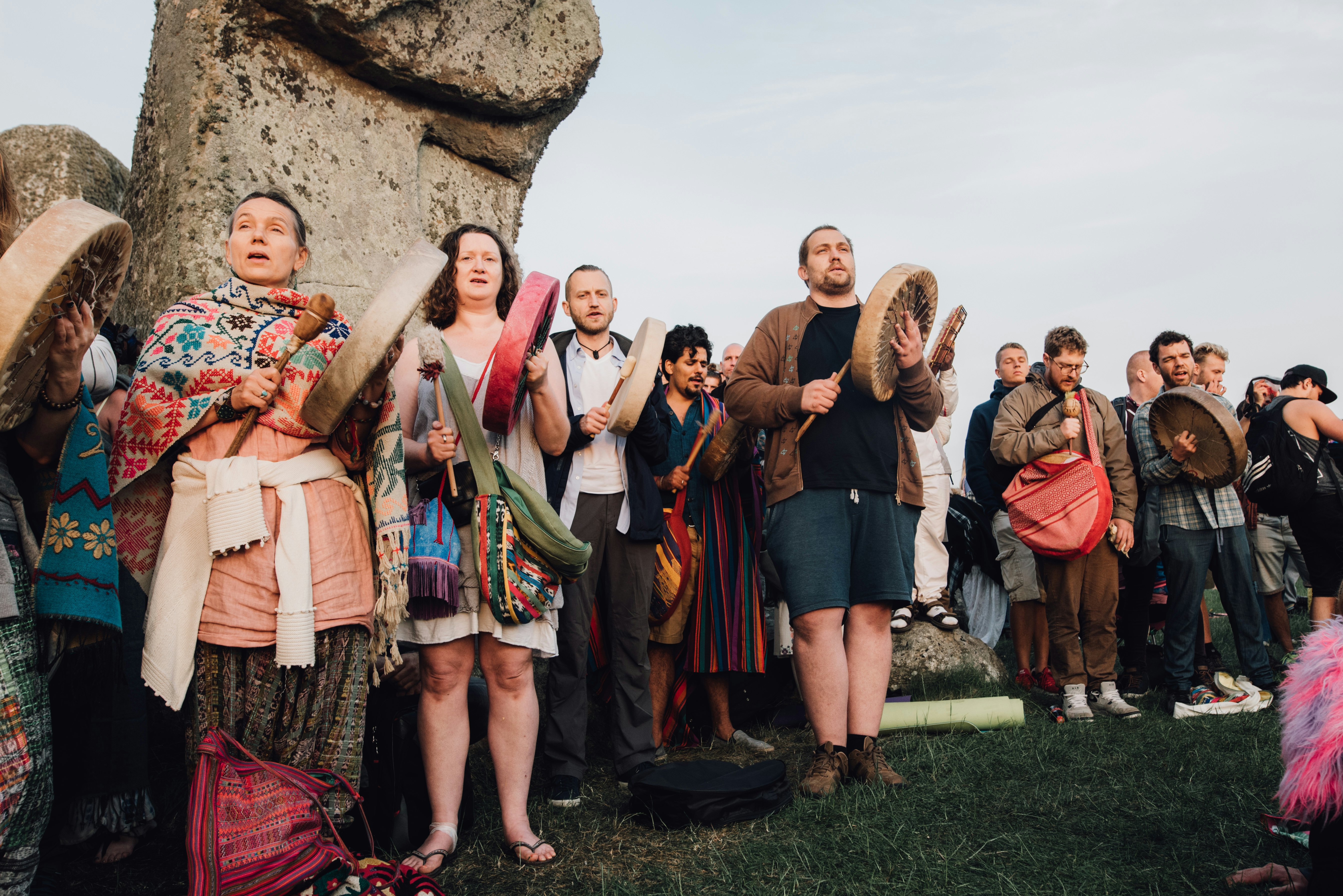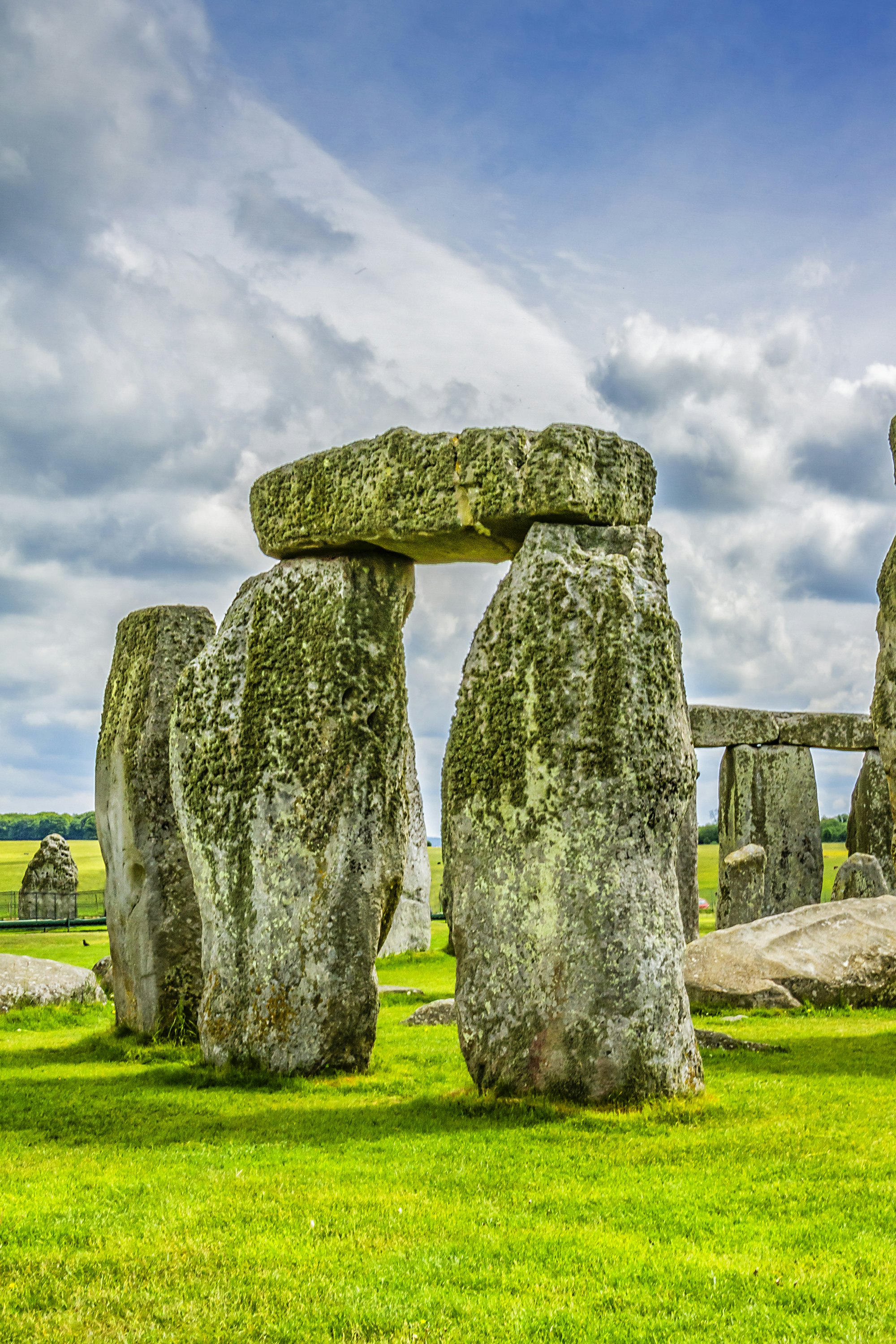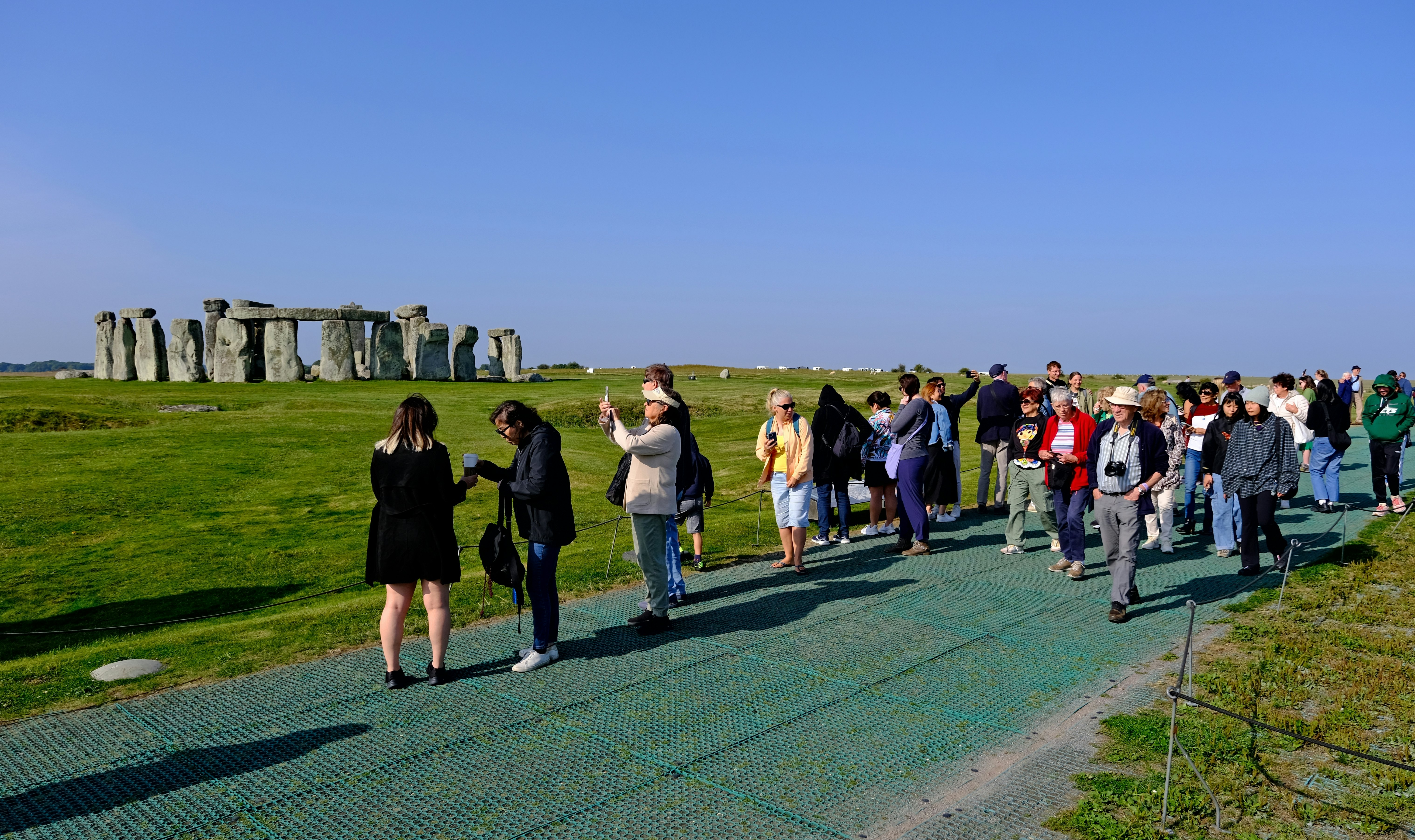
The Lonely Planet guide to Stonehenge, England



For an enigmatic introduction to ancient England, book a visit to Stonehenge. Justin Black/Shutterstock
This mystical ring of monolithic stones, a UNESCO World Heritage Site, is the most famous prehistoric monument in Europe and one of England's most emblematic sights, attracting pilgrims, tourists and New Age travelers for over 5000 years.
Despite countless theories about the purpose of Stonehenge, from a sacrificial center to an astronomical clock, no one knows exactly why ancient Britons expended so much time and effort on its construction. However, recent archaeological findings show the surrounding area was sacred to local people for hundreds of years before work began.
Here's a guide on what to expect and how to make the most of your visit to this ancient and mysterious site, which still connects visitors to eons of human culture.
A short history of Stonehenge
The process of building Stonehenge stretched over 1000 years. The first phase started around 3000 BCE with the construction of the outer circular bank and ditch. Within this were 56 pits – known today as “Aubrey Holes” after antiquarian John Aubrey, who discovered them in the 1600s – in which cremated remains were buried. You can see them at the site, marked by plaques.
About 500 years later, Stonehenge’s main sarsen stones were hewn and dragged here from the Marlborough Downs, 20 miles (32km) away. It's estimated that dragging one of the 50-tonne (55-ton) stones across the countryside would have required about 600 people.
The largest stones were erected in a horseshoe pattern and crowned by massive lintels to make the trilithons (two vertical stones topped by one horizontal stone). The Great Trilithon’s huge slabs perfectly frame the setting sun on midwinter’s day.
Although no one is entirely sure how the builders transported the stones so far, it's thought they probably used a system of ropes, sledges and rollers fashioned from tree trunks – Salisbury Plain was still covered by forests at the time of Stonehenge's construction.
Surrounding this horseshoe was a ring of 30 sarsens (17 are still standing), each linked to the next by a similar lintel. Four Station Stones were arranged around the enclosure’s edge in a layout also governed by the movement of the sun.
Two additional curving rows of smaller bluestones were hauled here from the Preseli Hills in south Wales, 250 miles (400km) away. In 2024, scientists discovered that the Altar Stone came all the way from northeast Scotland.

When is the best time to visit Stonehenge?
The best time to visit is early in the day, or late in the afternoon, if you want to see the site in relative peace and quiet. However, as tickets are timed, there is a limit on capacity, so you’ll never be utterly overwhelmed, even at the height of the peak summer visitor season.
In winter, the site closes by 5pm, and the light starts to fade from 3pm, so don’t leave your visit until too late in the day. Traffic can be a problem in the area at certain times of the day, so plan ahead to arrive on time for your ticketed slot.
A plan to turn parts of the main A303 road, which runs close to the site, into a tunnel was scuppered by the UK government in 2024 due to budget constraints (much to the dismay of Wiltshire Council). The proposed multi-billion-pound tunnel would have reduced traffic around Stonehenge, but opponents feared it could damage other monuments in the area.
How much do tickets cost?
Visiting Stonehenge is not cheap, but the experience is worth the investment, and there is plenty to see and do at the site besides visiting the stones. The fees collected here also help maintain less popular historic sites across the country.
Note, however, that visitors must admire the stones from a distance of about 5m (16.4ft) to reduce the human impact on the site, except on special tours or during the solstice and equinox celebrations.
Tickets are sold using a dynamic pricing system and cost between £28 (US$38) and £34 (US$46.50) for an adult. The price varies depending on how close to the day you’re booking, and whether you come during the week or at the weekend.
There are discounts for families, seniors and students, while children under five years and essential companions for travelers with disabilities are granted free entry.
There's an additional parking cost of £3 (US$4). This is paid via the Pay by Phone app, which we recommend you download before arriving, in case your cell phone provider does not offer good mobile data coverage at the site.

Can I visit Stonehenge for the solstice?
Yes, you can. Every year, large crowds flock to Stonehenge for the solstice and equinox celebrations. On these significant days in the pagan calendar, English Heritage allows for free but carefully managed access to this historic site. Best of all, pilgrims and revelers are allowed inside the Stone Circle to celebrate, as pagans have for millennia.
How much time should I spend at Stonehenge?
Plan for a minimum of two hours for a visit to Stonehenge, but half a day is better if you want to do the sight (and the ticket price) justice. Remember, there's much more to do and see than just visiting the stone circle.
Should I book a tour?
If you'd like a guided tour of Stonehenge, a VIP Stone Circle Experience tour lasting one hour is available, but capacity is limited to 52 people per tour, divided into two groups of 26. These tours run outside the normal opening hours; not only will you learn more about the site from guides, you'll get the chance to enter the inner circle on this tour.
Audio guides are not available but you can download a free audio tour via your phone before you arrive (it’s available in multiple languages). Wi-fi is available at the Visitor Center, but it’s best to download the tour ahead of your visit to be safe.
From the nearby city of Salisbury, hop-on, hop-off Stonehenge Tour buses run to the site. You can choose to just use the tour for transport, or buy a combined ticket that also includes entry to Stonehenge (with combination tickets also available for Salisbury Cathedral).
Where can I eat and drink?
There is a busy cafe at the Visitor Center selling the usual cafe fare – sandwiches, soups, Cornish pasties and so on. They also have refill stations for water bottles. It’s also possible to bring your own food to Stonehenge and have a picnic; there’s a dedicated picnic area in the monument field.
Can I get to Stonehenge on public transport?
Yes! Trains run from London Waterloo to Salisbury station, around 9 miles (14km) from Stonehenge. Tickets cost around £27 (US$36), the journey takes 1½ hours, and trains leave every half hour.
From Salisbury station, Stonehenge Tour buses run directly to Stonehenge. These tours also stop at the Iron Age hill fort of Old Sarum on the way back to Salisbury.

Begin at the Visitor Center
Before making your way to the Stone Circle, it pays to spend some time at the Visitor Center to learn more about the site, and increase your sense of reverence when you do get to this incredible Neolithic monument.
Engaging displays plot the site’s development and show how Stonehenge fits within the surrounding landscape. The highlight is a 360-degree projection of Stonehenge showing the changing seasons (including midsummer sunrise) from “inside” the circle.
Archaeological exhibits include axes, arrowheads, antler picks and other finds unearthed at the site, plus a strikingly lifelike model of a Neolithic man found buried in a long barrow nearby.
See a reconstructed neolithic village
Outside the visitor center, you can see replicas of thatched-roofed, white-chalk-walled Neolithic houses, similar to those used by Stonehenge's builders. These were constructed using local materials and ancient methods.
Volunteers bring this place to life; you may find attendants dressed in period costume baking bread over a fire, making ropes, or working on flint tools. Volunteers are keen to answer questions from curious minds, so if you’re traveling with kids, encourage them to get involved.
Options for getting from the Visitor Center to the Stone Circle
To get to the Stone Circle from the Visitor Center, you can take the shuttle bus (included in the ticket price) or walk via a 2.6-mile (4km) circular trail through this ancient landscape.
Alternatively, start the walk from halfway along the bus route. Ask the driver to drop you at Fargo Woods, and then follow the trail the rest of the way, past the Cursus earthwork and Cursus Barrows.
If time (and the weather) are on your side, it is best to walk so you can connect with the landscape and experience the wonder of spying the Stonehenge circle as you climb over the hill from the Visitor Center (you can always catch the bus back). The walk takes around 40 minutes each way.
If you have limited time, or it's cold, wet or windy, the bus shuttles people between the visitor center and the Circle path every few minutes throughout the day. Note that the Stone Circle has no shade or rain cover and no visitor facilities; make sure you are fully prepared before you depart, no matter which way you journey to the Stone Circle.

What to expect at the Stonehenge Circle
When walking the visitor path around the Stone Circle, you can get as close as 5m (16ft) from the stones. Access to the inner circle of Stonehenge is restricted to protect the site, the delicate lichen on the stones, and to increase everyone’s enjoyment by not having to snap photos full of people!
The circle’s entrance is marked by the Heel Stone and, slightly further in, the Slaughter Stone. These stones were aligned to coincide with sunrise at the midsummer solstice.
Make time to see the burial mounds nearby
North of the circle lie the Cursus Barrows, a humped cemetery of Bronze Age burial mounds. From this point, you can make out the ridge of the Cursus itself, an elongated embanked oval built around 1000 years before Stonehenge was raised.
More burial mounds, the Old and New King Barrows, sit beside the Avenue, a ceremonial pathway built to link Stonehenge with the River Avon, 1.5 miles (2.4km) away. The only visible remains of the Neolithic settlement further up the river at Durrington – believed to have housed the builders of Stonehenge and nearby Woodhenge – is the massive earthwork built around it.
Walk through Stonehenge’s open countryside
The National Trust has a downloadable guide with details of a 3.5-mile (5.6km) walk around the Stonehenge landscape, which is a great way to spend more time exploring the beauty and mystery of this site, away from the crowds. Go to the website and search for “A King's View."
The walk traces tracks across the chalk downland from Stonehenge, past the Cursus and Kings Barrows and along a section of the Avenue. The Stonehenge Visitor Center also has leaflets detailing local walking routes.
Pair Stonehenge with the Avebury Stone Circle
A 30-minute drive away from Stonehenge is the world's largest stone circle at Avebury, another fascinating ancient site. It does not have the same level of tourism development as Stonehenge and visitors are free to wander around, with local houses, shops, roads and even a pub dotted between the ancient stones.

Is Stonehenge accessible?
Yes, the Visitor Center, the shuttle bus, and the path to the Stone Circle from the bus set-down point are all accessible with a wheelchair.
Top tips for visiting Stonehenge
The best times to visit are weekdays, before 11am or after 2pm.
Tickets are for entry in a specific time slot; you can then stay until closing.
Download English Heritage’s free audio tour (bring headphones) for comprehensive guides to the exhibitions, the Stone Circle and the surrounding landscape.
You can bring your own food and picnic on-site.
Parking is £3 (US$4) and visitors pay using the Pay by Phone parking app, which is best downloaded before you arrive.
This article was adapted from Lonely Planet’s England guidebook, published in June 2025.















